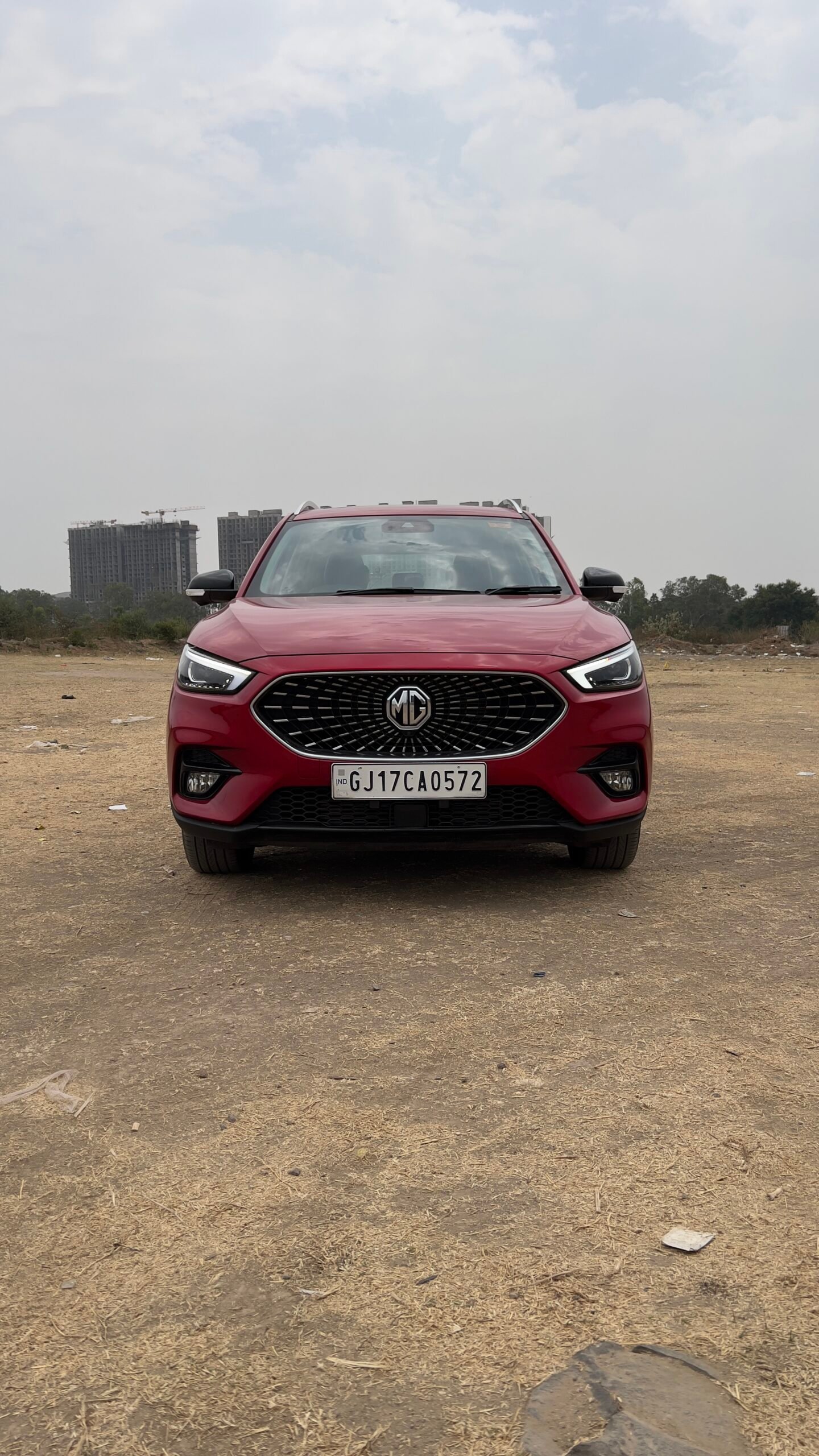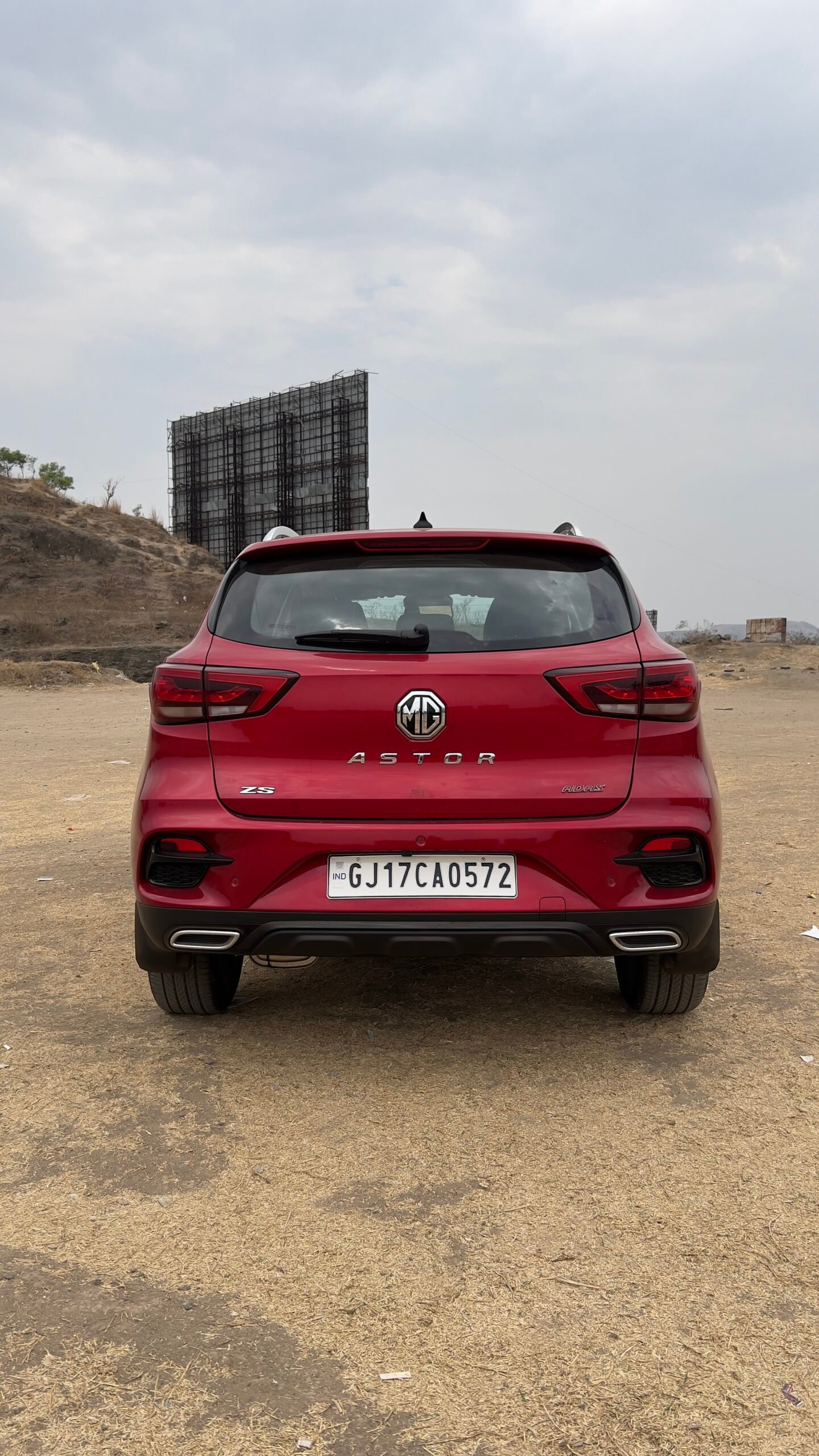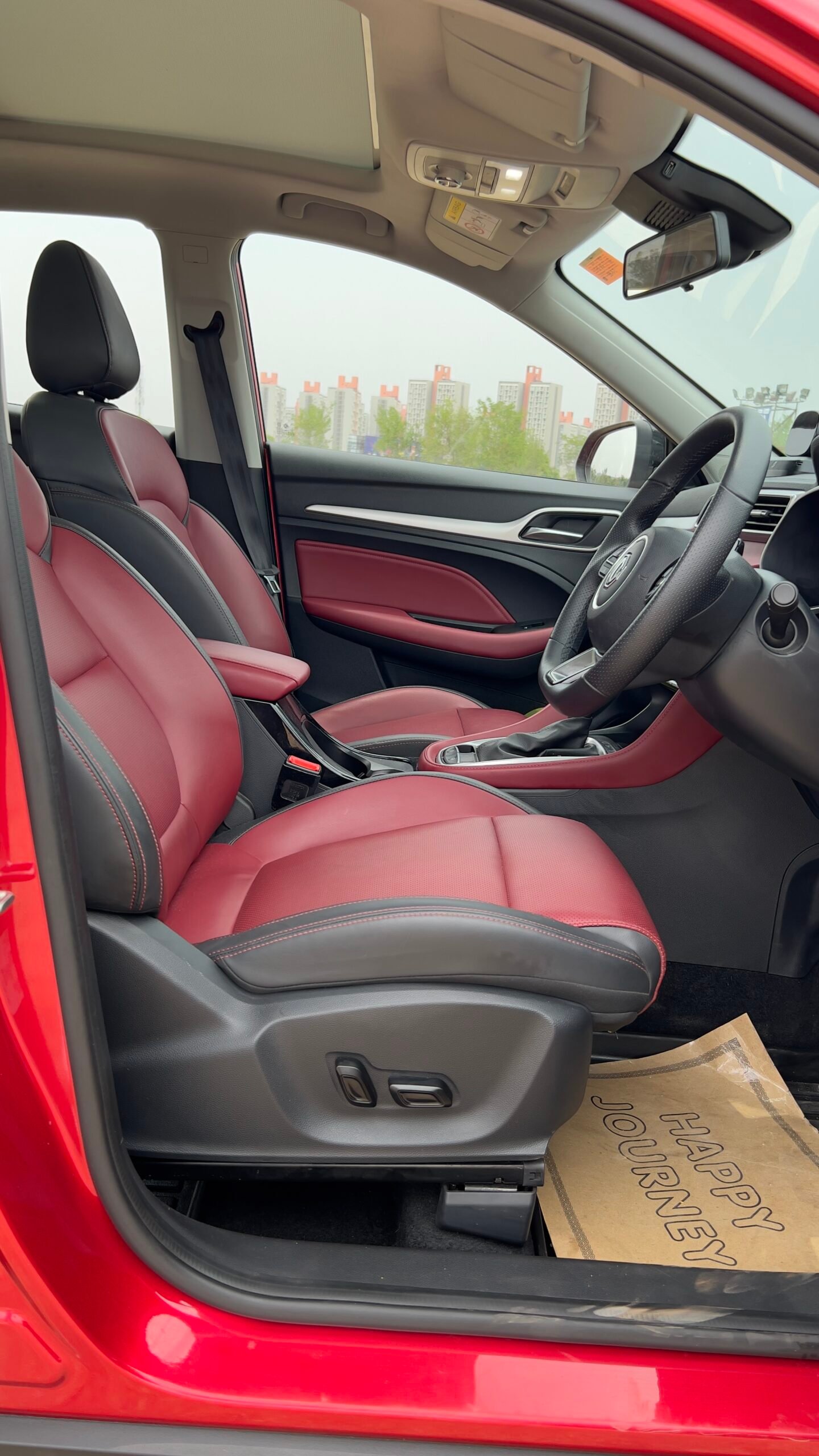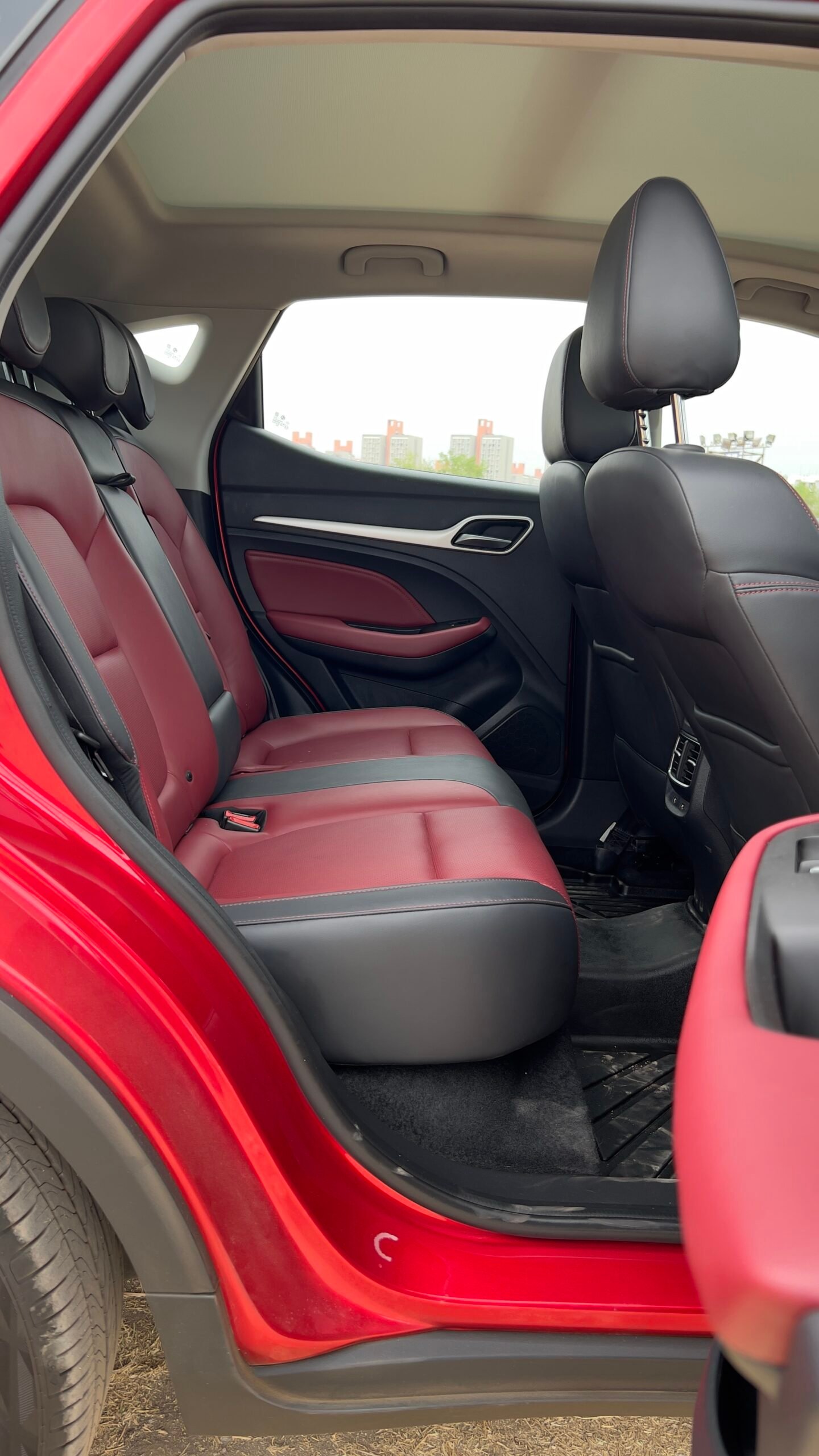MG Motor India made its debut in 2019 with the Hector and ever since then it has faced stiff competition, especially from Hyundai Creta and Kia Seltos, the latter of which also made its debut in India that year. Hector hasn’t had smooth sailing for MG, but it has managed to stake a claim in the segment with its sheer size, segment-first features, and unapologetic design.

As a company that does not rest on its laurels, MG decided to double its presence in this class with the introduction of the Astor. Now, MG isn’t expecting an easy ride as Astor will lock horns against Skoda Kushaq, Volkswagen Taigun, the Nissan Kicks, the popular Seltos and the segment leader Creta, but with this ambitious move, they are hoping to bowl a bouncer and disrupt this packed SUV segment.
Behind the steering wheel
The Astor is only available in petrol like some of its rivals — the Kushaq, Taigun and the Kicks and offers two engine trims — the 108bhp 1.5-litre naturally aspirated unit with 144 Nm of torque and the 1.3-litre turbo that belts out 138bhp and 220 Nm. In the former, the transmission can be either a 5-speed manual or a CVT automatic, while in the latter, only a 6-speed torque converter automatic transmission is offered. We drove the turbo-petrol version and were pleasantly surprised by the refined powertrain. The engine’s humming noise remains inaudible even when you are putting the pedal to the metal, showing off its ninja-like characteristics. Apart from its silky-smooth prowess, it offers enough power to ensure the Astor is fairly pacey in real-world driving conditions.
The response is linear, but MG has managed to score brownie points by containing the turbo lag. As the engine hardly takes any time in offering the required power, the Astor has the grunt to tackle the demands of city driving conditions including overtaking when needed.

On the highways, the Astor doesn’t like to be hurried or pushed around.
It picks up speed in a measured manner and once the needle passes 3,000rpm, horses start picking up the pace. Even though the 1.3-litre turbo has enough zing, it feels slower than its competition, and this is because of the 6-speed torque converter, which takes an additional second when deciding whether to downshift or not. Sure, the transmission isn’t the quickest in the segment, but in real-world driving conditions, you will appreciate its smooth characteristics that provide an effortless driving experience. The Astor doesn’t come with steering mounted pedal shifters, but honestly, many owners wouldn’t even use it regularly, so it’s hardly a deal-breaker.
Astor has tried to mix things up by offering three steering wheel modes — Urban, Normal and Dynamic. The Urban makes the steering wheel light as a feather and can be quite a boon after a long day at work or if the traffic is moving at a snail’s pace. Dynamic mode is when the heft of the steering wheel increases for better control and thus making it feel sharper. Now the difference is minimal, but it doesn’t feel artificial either.
MG is known for its soft suspension set-up to pamper its customers, but the Astor has taken a different route as it’s slightly on the firmer side like most European cars. It is well sprung, and sails over potholes and ditches without a hitch. The ride quality is supple and comfortable, but some vertical movement can be felt in the cabin while driving on broken roads.
The Astor’s handling prowess is more like a car and can easily manoeuvre at slow speeds in city traffic, which will be appreciated by many. Keeping in mind that it’s a crossover or an SUV, the body roll can be felt while taking corners, but it remains stable and surefooted.
The world of ADAS
The Astor is the first vehicle in the segment to be equipped with an Advanced Driver Assistance System (ADAS) with Autonomous Level 2 features. Let’s start with Lane Assist System. When the vehicle is swaying to the other lane, it notifies the driver with an alert signal on the digital console, vibration feedback from the steering back or it automatically steers it back to its lane. The system goes into autopilot mode for a short time, so it’s best to stay in control of the car rather than completely relying on the technology.
Adaptive cruise control is another handy feature that lets you set a speed and the Astor maintains it and controls the brakes and acceleration according to the distance of the vehicle in front. It also comes with blind-spot warnings as the LED warning signals in the outside rearview mirrors light up when an object is nearing the vehicle. With a front collision warning system, the driver will receive SOS signals if a pedestrian or a car is too close and automatically activate emergency braking to avoid any serious accident. It has many other safety features like a speed assist system, intelligent high beam control, etc.
Apart from ADAS, the Astor top-of-the-line variant has six airbags, a traction control system, hill hold and hill descent control, an electronic stability program and much more.
AI Assistance
MG is known for pushing the envelope when it comes to technology and the Astor is no different as it gets AI assistance. It takes care of in-car functions, updates you on current affairs, and even tries to drive away your Monday Blues by telling you jokes. The two magic words are ‘Hello Astor!’ and then say, please open the sunroof or please tell me a joke, and it responds flawlessly as it understands the Indian accent. When it comes to in-car related commands, it functions seamlessly, but internet-related functions may take an additional couple of seconds depending on network coverage. So, does the personal AI assistance manages to break the monotony in the car or is it just for optics? This is an opinion that will vary from person to person.
Exterior design
The Astor’s looks quite refreshing with the chrome Celestial Grille in front. It’s not the typical MG front grille that makes a bold statement, rather it’s subtle yet has a distinctive presence. The chiselled sculpted full LED Hawkeye headlamps complement the contemporary design, while the lower lip of the bumper gets a contrasting black colour, which houses the radar system, cameras and sensors for the Advanced Driver Assistance System. From the side, the Astor looks like the ZS EV, but it is worth mentioning is that it comes with four-disc brakes and the top-of-the-line model boasts 17-inch turbine inspired dual-tone alloy wheels. Moving to the rear, it continues with the Hawkeye design language for the LED tail lamps. It also sports a dual exhaust design, but this is just for aesthetics as the single exhaust pipe is neatly hidden behind the bumper.

World-class cabin
The Astor’s cabin has an air of premiumness and gives a rich feel. MG offers an array of upholstery options like the red-black combination or the more traditional colours — beige and black. The materials used inside are a massive update from Hector.

MG has given the cabin an upmarket feel as it uses a leather padding panel on the dashboard and it is the first vehicle in the segment to come with top-notch soft-touch materials. The interiors feel world-class and the 7-inch LCD all-digital driver’s console houses digital dials with a multi-information screen in the centre. MG has taken a more traditional route and has given the Astor a 10.1-inch floating touchscreen display, which is quite intuitive. The infotainment system comes with an embedded Jio e-SIM along with Apple CarPlay and Android Auto. With physical buttons below the touch screen, one can use muscle memory to control cabin temperature and fan speed without taking your eyes off the road. It also comes with other features like auto headlights, rain-sensing wipers, electronic parking brakes and a 360-degree camera, through the graphics would have been crisper and more realistic. The Astor misses out on some features like front-ventilated seats, wireless charger, telescopic adjustment for the steering wheel and auto-dimming rearview mirror.
Seat and comfort
In terms of dimensions, the Astor is longer, wider and taller than the Creta, but the latter’s wheelbase is 25mm longer. Does that affect cabin space? Let’s find out. The seats are well crafted and offer substantial back support, while the driver’s seat is electrically adjustable. The rear space offers plenty of legroom and good headroom.

The shoulder room, on the other hand, could have been better, especially when you have three adults sitting in the back. The high window line and the thick C-pillar would have made the rear passengers feel a bit enclosed, but thanks to the massive panoramic roof, the cabin feels airy.

The middle seat offers decent leg space as the floor is on the flatter side. Even though the seat’s padding could have been softer, it gets an adjustable headrest. Apart from the rear air condition vents, there are also two USB ports to charge your devices.
Verdict
Priced from Rs 16.18 lakh to Rs 17.73 lakh, ex-showroom Delhi, the Astor squares off against the Creta turbo-petrol range, making it competitively priced keeping in mind the long list of features its equipped with like ADAS and AI assistance. The Astor’s cabin materials are the best in the segment and feel like a premium vehicle. The 1.3-litre turbo is refined and has enough power, though it’s all about comfort and a seamless driving experience. The design may not sweep SUV buyers off their feet as it lacks the typical butch road presence and looks more like an urban crossover. MG could have worked on the boot space as it’s compact and a tall loading bay doesn’t help either. So, if you’re in the market to buy a mid-size SUV, we would recommend you to seriously consider the Astor as it’s a worthwhile option in this segment.






